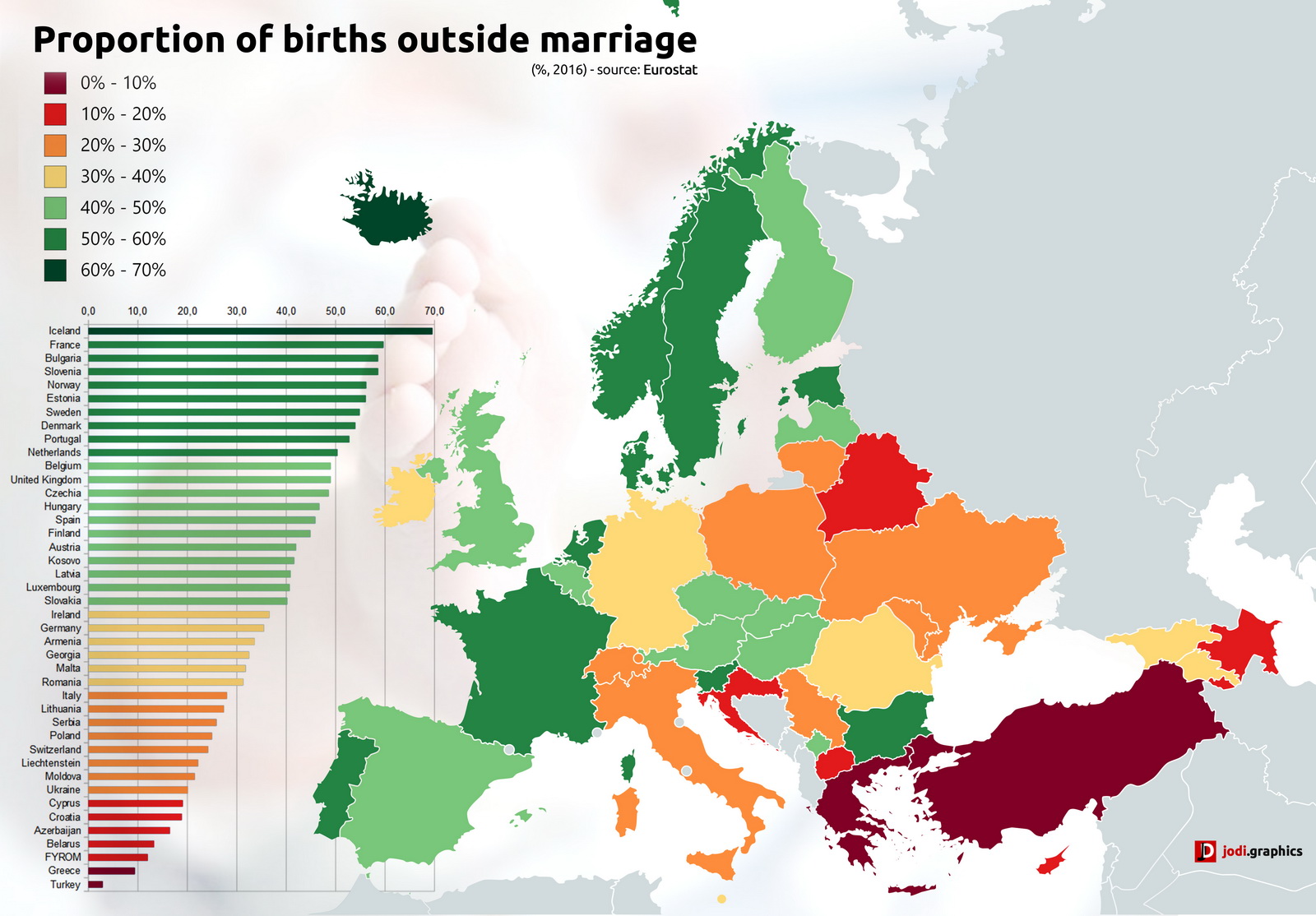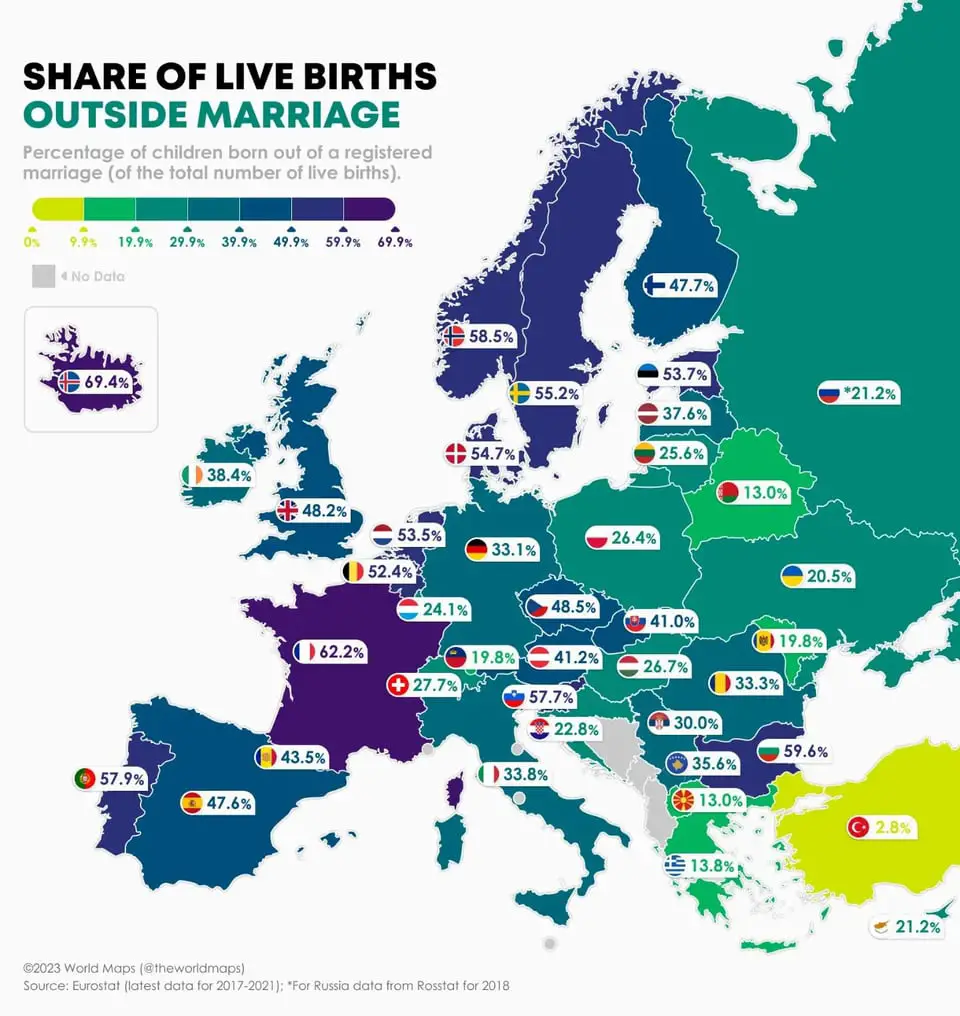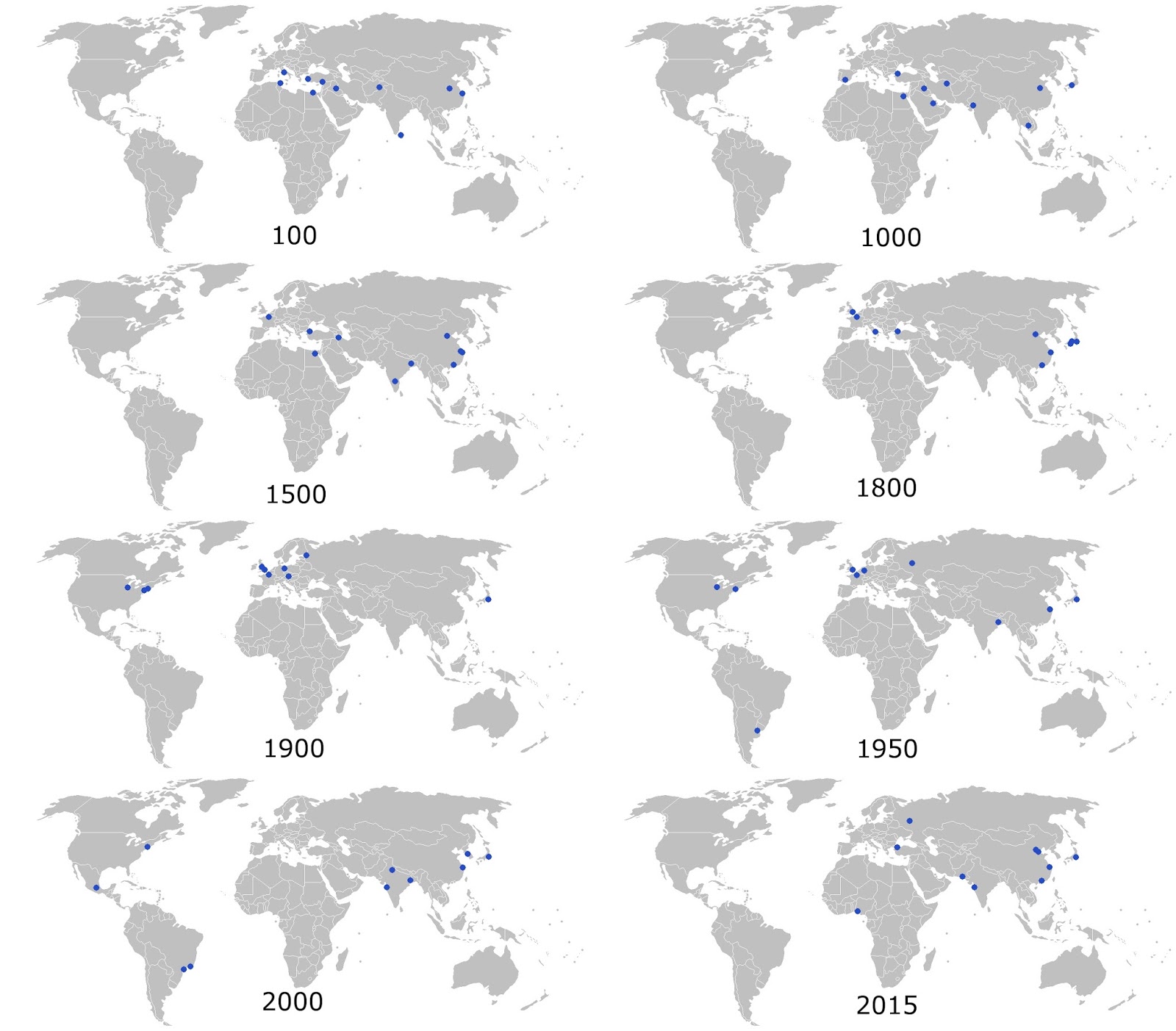Births Outside Marriage in Europe: Trends, Changes, and the Future
Family structures in Europe have undergone a dramatic shift over the past few decades. Marriage is no longer seen as essential for starting a family in many countries, and the proportion of children born outside of marriage continues to rise. But how has this trend evolved over time? And what can we expect in the future?
How Common Are Births Outside Marriage in Europe?
Reddit user JoDi2019 created a map using 2016 Eurostat data, showing that 42% of babies in the EU were born outside of marriage at that time. However, the variation across countries was striking—while nations like France and Iceland had the majority of births occurring outside of wedlock, countries such as Turkey had fewer than 10%.

A newer map by @theworldmaps, based on Eurostat data from 2017-2021 (with Russian data from Rosstat for 2018), confirms that this trend has only strengthened. Countries like Portugal and Spain have seen noticeable increases, and in several Nordic countries, the percentage now exceeds 60%.

Changes Over Time: A Long-Term Shift
Over the past few decades, the percentage of births outside marriage has risen sharply across most of Europe.
- In 1960, fewer than 10% of children in Western Europe were born to unmarried parents. In some countries, the number was almost negligible.
- By 1990, the EU average had risen to 17%. Countries like Sweden and Denmark were already above 40%, leading the way in this social transformation.
- By 2010, the EU average was 37%. Southern European countries such as Spain and Portugal saw a rapid rise, catching up with trends seen earlier in the north.
- Today, over 60% of births in some countries, such as Iceland, France, and Portugal, occur outside of marriage.
Which Countries Lead and Which Lag?
- Highest percentage: Iceland (~70%), France (~63%), Portugal (~60%).
- Lowest percentage: Turkey (~3%), Greece (~12%), and Poland (~26%) still have significantly lower rates, likely due to stronger religious and cultural influences.
What’s Driving This Change?
Several factors contribute to this shift:
- Changing societal attitudes – Marriage is no longer seen as essential for starting a family in many European countries.
- Stronger legal rights for unmarried parents – Many nations now provide legal protections for cohabiting couples, reducing the incentive to marry.
- Economic and career factors – Young people are delaying marriage due to financial instability or career priorities.
- Secularization – Countries with lower religious influence tend to have higher rates of births outside marriage.
What Does the Future Hold?
Experts predict that the trend will continue to rise in most European countries, although at different rates depending on cultural and policy differences.
- Projection suggests that by 2035, over 50% of births in Europe will be outside marriage, even in some traditionally conservative nations (Nowadays 42% of births in the EU are outside marriage).
- Countries like Italy, Poland, and Greece may see an increase but at a slower pace due to strong religious and cultural ties to marriage.
- In Nordic and Western European countries, marriage could become a minority choice for starting a family within the next two decades.
How Does This Affect Children?
Studies suggest that the well-being of children depends more on family stability than marital status. However, some challenges exist for children born to unmarried parents:
- In countries where legal protections for unmarried couples are weak, children may face higher financial instability.
- Cohabiting parents are statistically more likely to separate than married couples, which can impact family stability.
- In nations with strong social safety nets, the effects are minimal, as governments provide support regardless of marital status.
Curious map enthusiasts can explore Amazon’s collection of Europe map posters (These links lead to Amazon.)
- Europe Wall Map GeoPolitical Edition by Swiftmaps
- Painless Learning M. Ruskin Europe Map Placemat (EUR-1)
- Vintage Map of Europe Travel World Political Map
What do you think about these trends? Will marriage remain relevant, or will it become a thing of the past? Share your thoughts in the comments!








